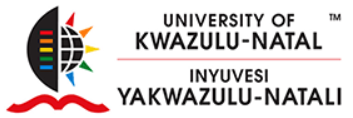New version of iconic Cape Parrot design on latest Woolworths shopper bag
A shopper bag launched in 2017 by Woolworths to support research and conservation of South Africa’s only endemic parrot, the Cape Parrot (Poicephalus robustus), raised significant funds with its striking design for BirdLife South Africa (BirdLife SA) and the Cape Parrot Working Group (CPWG) based at UKZN.
Now the retailer has again thrown its weight behind the work of the CPWG and BirdLife SA with a second version of the shopper bag with artwork by Athol Moult and Di Botha.
The bag, part of Woolworths’ Good Business Journey, supports the research and annual Cape Parrot census organised by the CPWG. From the sale of each bag, Woolworths donates R10 to BirdLife SA for these efforts as well as the conservation of the Cape Parrot and the indigenous Afromontane mistbelt forests it is native to.
The CPWG is based at UKZN and chaired by Professor Colleen Downs, South African Research Chair (SARChI) in Ecosystem Health and Biodiversity in KwaZulu-Natal and the Eastern Cape. Through academic research and citizen science programmes, contributions to management plan development, Convention on International Trade in Endangered Species (CITES) listings, and practical conservation programmes, the CPWG highlights the plight of the endangered habitat specialist.
In 2015, research emanating from this group led to the reclassification of the Cape Parrot as its own distinct species, improving its conservation priority and enabling the planning of conservation management strategies.
Cape Parrots are threatened by the loss and fragmentation of mature Afromontane Yellowwood forests, where most of their diet and nesting areas are concentrated. Less than 2% of all South African landscapes comprise natural forests, and only a small proportion of those are Afromontane Yellowwood forests.
Cape Parrots are also threatened by illegal hunting and capture, and increasing disease prevalence as their habitat disappears through land-use change, degradation and human exploitation. The CPWG and BirdLife SA are working on identifying and protecting habitats for the Cape Parrots, especially three key Important Bird and Biodiversity Areas in Limpopo, KwaZulu-Natal and the Eastern Cape.
Proceeds from the sale of Woolworths’ bags will help protect and secure some of the parrots’ last remaining habitats.
It is an important year for Cape Parrot research – the CPWG’s 25 Cape Parrot Big Birding Day on 7 and 8 May involved citizen scientists who assisted with a count to estimate numbers of the bird in several areas. Fewer than 1 600 Cape Parrots have been recorded in the wild.
The Cape Parrot is also on the logo of the International Ornithological Congress – the world’s largest summit on avian biology – taking place virtually in August this year and co-hosted by UKZN and the International Ornithological Union.
Downs thanked Woolworths for its continued support and Moult and Botha for their designs, and encouraged the public to support the protection of the Cape Parrot and its forest habitat by buying the bags.
Words: Christine Cuénod
